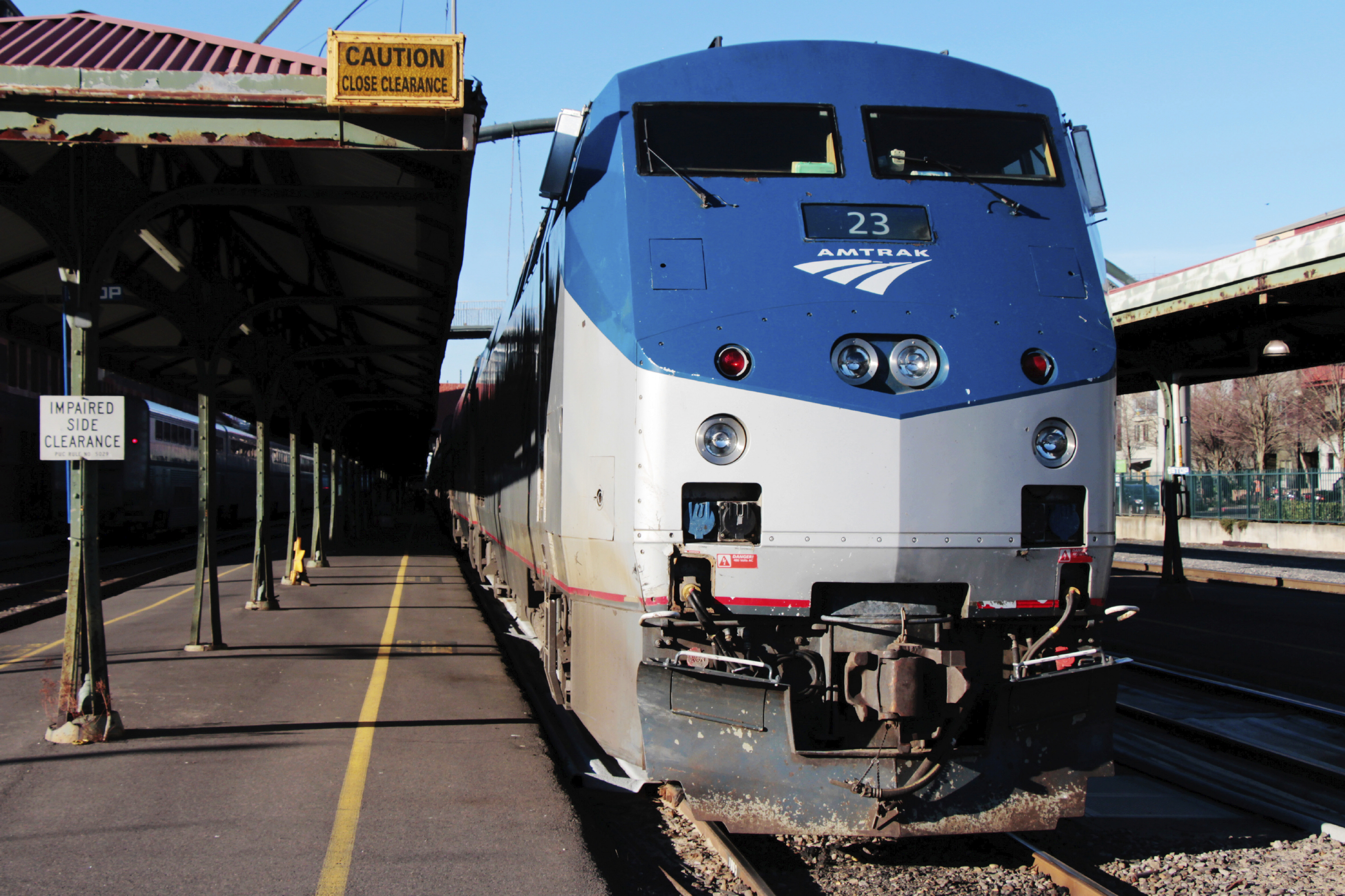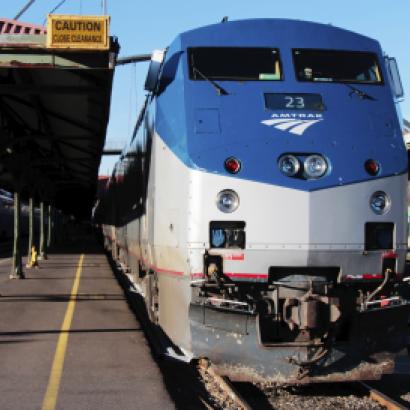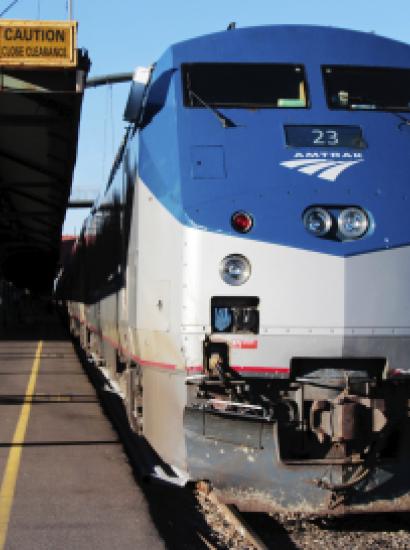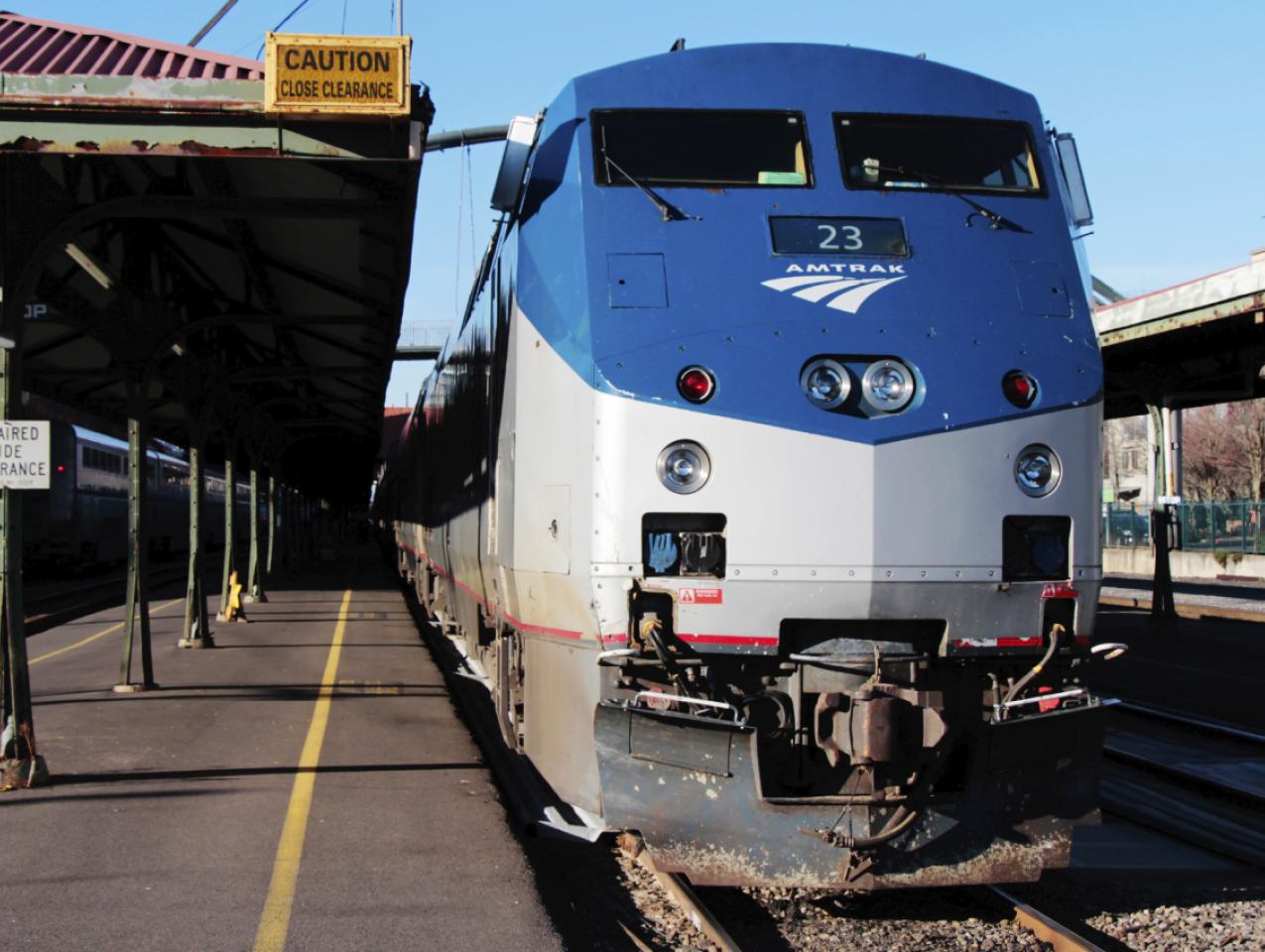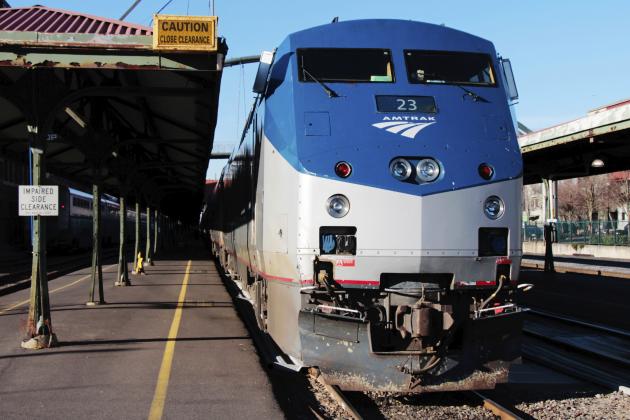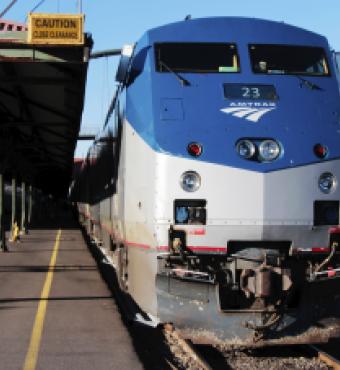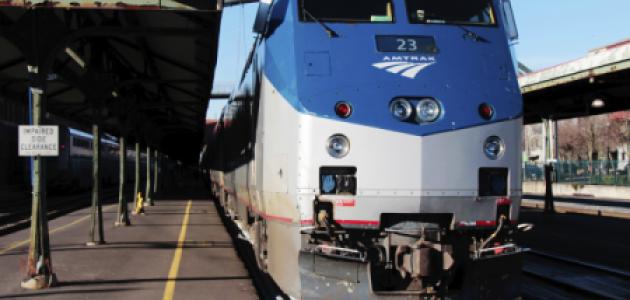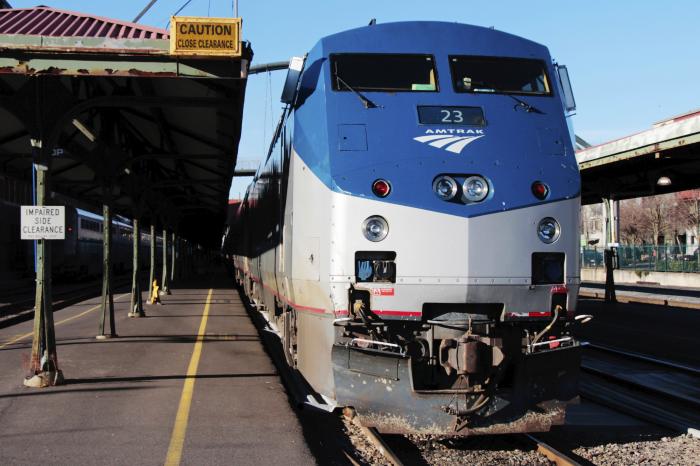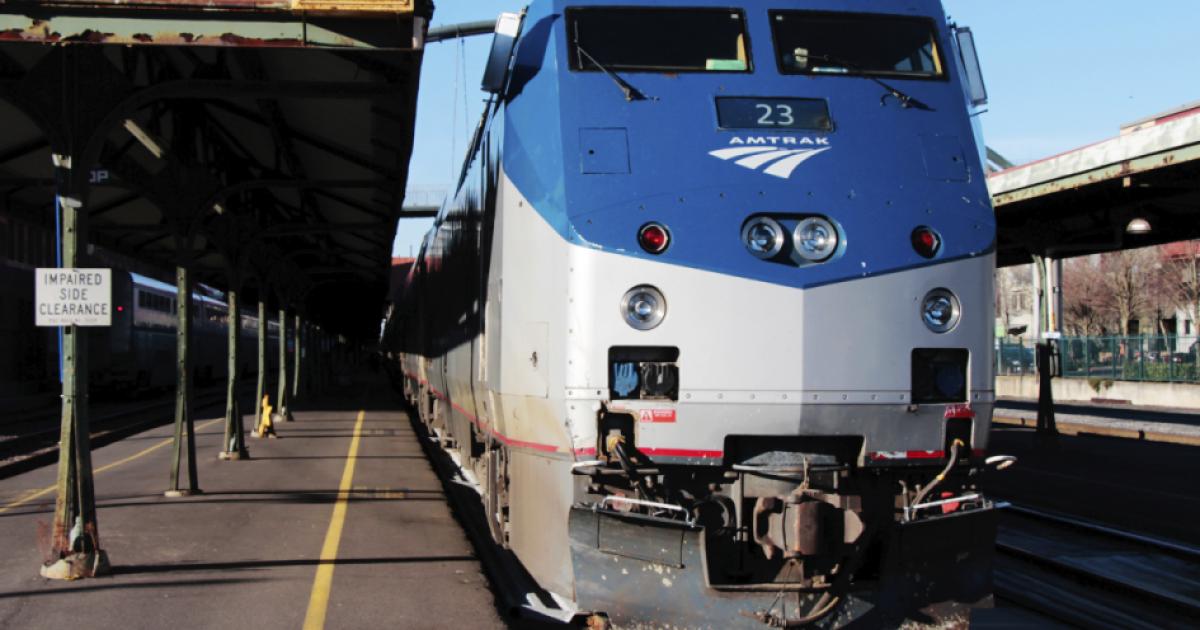- Energy & Environment
- Politics, Institutions, and Public Opinion
- State & Local
- California
Before the train leaves the station (pun intended) and we detail California’s misadventures in imagining, financing, and constructing a high-speed rail system, I’d like to make a confession.
If such a rail line existed and I could hop a train in the San Francisco Bay Area and arrive in Los Angeles in less than three hours, as was originally promised, I’d climb aboard in a heartbeat.
Why?
Maybe I’ve watched North by Northwest too many times, but a swift and quiet train seems a civilized way to travel, not to mention one that’s better for the environment than auto traffic. And I’d rather sit in comfort and work or read or just plain zone out rather than deal with California airport drama or the white-knuckle experience of lane-weaving, manic drivers on California’s two north-south arteries, US Route 101 and Interstate 5.
But that dream is far from reality in California, where for over a decade now state government has gone off the rails on a crazy train (my sincerest apologies to Ozzy Osbourne).
The first stop on our ill-fated route: 2008’s Proposition 1A, a $9.95 billion bond sold to voters as a down payment on a $45 billion plan to build an 800-mile high-speed rail system connecting Los Angeles to San Francisco, with the promise of a one-way ride under three hours at a cost of about $50 a ticket.
The next stop: skyrocketing costs. Within four years, the bullet train’s price tag had risen to $68.4 billion. Moreover, an updated plan recommended a “blended” approach to rail travel that had the “bullet” train sharing tracks with slower commuter trains. And the price of a one-way ticket: anywhere from $81 to $123.
Followed by: an ever-distant end of the line. The original plan, as approved by voters in 2008, called for the entire project to be completed by 2020. A 2012 business plan pushed that completion date to 2029, since pushed back to the mid-2030s.
Granted, there has been actual construction. Beginning in 2015, California broke ground on its grand rail line. However, it’s but a 171-mile link in the Central Valley. Moreover, it’s not two tracks but only one, connecting Bakersfield and Merced. Why? Those pesky construction costs. The latest business plan has the full cost of the full-blown, LA–SF system reaching $100 billion (here’s a timeline on cost-growth).
So where does this leave California high-speed rail? At the moment, it’s a train in search of a conductor.
In theory, that should be California’s governor, Gavin Newsom (his name appears on the home page of the California High Speed Rail Authority’s website).
But Newsom seems as willing to don a conductor’s hat as he would a Trump MAGA ballcap. In his first gubernatorial State of the State Address, back in 2019, Newsom said the ambitious north-south rail project “would cost too much and take too long.” But he also vowed to plow ahead on the completion of the Central Valley segment—in the process, doing high-speed rail’s advocates no favor by admitting that the Central Valley project is mocked as a “train to nowhere.”
Newsom could make high-speed rail a priority in next year’s State of the State Address. But were he to do so, would the state legislature answer the call?
When California’s legislative session ended in September, lawmakers had refused to release $4.2 billion in bonds (what’s left over from the Prop 1A money) needed to help finish work on the Central Valley segment. Why the resistance? Because of a difference of opinion among the majority Democrats who dominate the legislature. Democrats from the Los Angeles area would rather devote bond money to commuter rail projects in their urban and suburban districts.
Another possible source of salvation for California high-speed rail: not Governor Gavin, but Uncle Sam—more to the point, a Democratic president and majority congressional Democrats.
In June, the Biden administration restored a $929 million grant for California high-speed rail that the Trump administration had previously withheld. Billions more could be on the way, depending on the outcome of the $3.5 trillion reconciliation package currently stuck in Congress. But that measure at best would devote $20–30 billion in high-speed rail funding that California would be competing for against other states. In other words, there’s enough funding there to make up for the tens of billions of dollars California would need to reach that $100 billion price (at present, the total amount of identified, available federal and state funding is in the range of $20.6–23 billion—that incudes Prop 1A bond money, various federal grants, plus proceeds from California’s Cap-and-Trade Program—with a “medium forecast” of $21.8 billion achievable through 2030).
Should Newsom and the state legislature devote more funds to high-speed rail next year, the timing will be ironic. Next May will mark the 85th anniversary of the opening of the Golden Gate Bridge. That feat of engineering took only seven years to complete, from the federal War Department issuing its final permit to the span’s completion and a road put in place. Its budget never spun out of control, the $35 million construction cost matching the $35 million authorized bond issue (those construction bonds retired in 1971).
A better engineering analogy for the Golden State’s misadventures in high-speed rail: what the Hoover Institution’s Victor Davis Hanson calls “California’s Stonehenge”—strands of cement monoliths dotting the Central Valley landscape not unlike the more primitive sarsen stones in Great Britain.
Stonehenge, we think, served as a holy place. So too do these physical embodiments of California’s high-speed rail: shrines to a flawed vision and a waste of billions of dollars better spent elsewhere to address California’s transportation and infrastructure needs.







